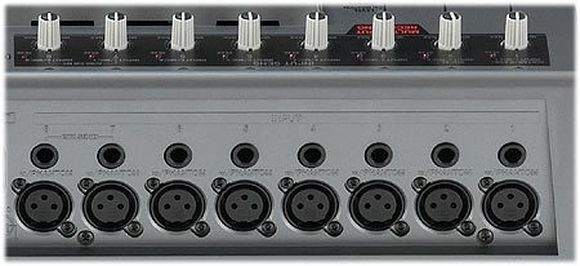4. Input Secton
All available multitrack compact studios have one thing in common: They seek to be, more or less, self-sufficient systems. This approach makes it possible to accomplish all recording, effects processing and editing steps without the help of an external device and the basis of that is an input section with a mixer. The equipment varies from device to device but generally the larger 16, 24, and 32 track recorders have more advanced mixers than the smaller 8 and 4 track versions. Similar can be said of the input section. Semi-professional and professional devices offer, in addition the standard connections, symmetrical XLR inputs with phantom power, allowing for the use of high quality condenser mics. Side note: Dynamic mics don’t require phantom power. Separate effect channels are also standard on professional multi-tracks.

But don’t worry: Even the more compact devices (8 and 4 track) are sufficiently outfitted for good sound and performance, still yielding impressive recording results! Some 8 track recorders even come with a balanced XLR input and phantom power! Making it worth your time to check the technical data.


